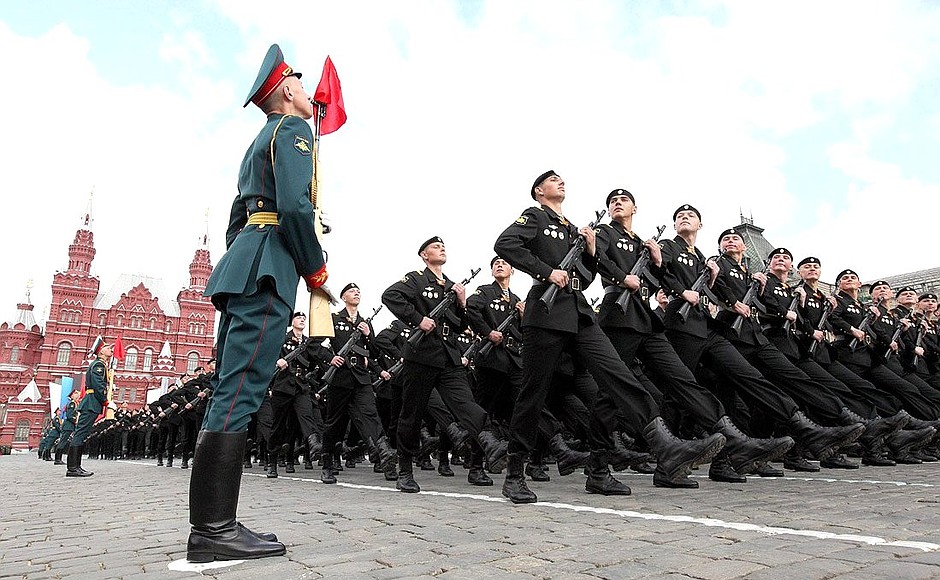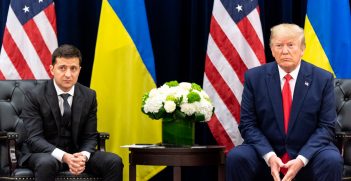Russia’s Rapid Rebound

After the collapse of the Soviet Union, Russia entered what many assumed to be an inevitable period of decline. Recently, however, the former superpower has increasingly asserted and projected its power. How sustainable is the resurgence?
Russia’s return to prominence in international politics has taken many observers by surprise. After all, the received wisdom for much of the first decade of the 21st century was that Russia was experiencing the last death throes of empire. A series of failed resets with the US, the gas wars of the mid-2000s, conflict with Georgia in 2008 and a stubborn insistence on a geopolitical sphere of influence in the former USSR were characterised as temporary measures that could not forestall an inevitable decline. Ultimately, this would engender a domestic political transition and Russia’s acceptance of a diminished role in the liberal order.
How quickly times change. The election of Donald Trump (and Russia’s suspected role in influencing the US presidential election), the shock of Brexit, NATO’s failure to dethrone Assad and a more pugnacious Chinese foreign policy have forced Western elites to confront the possibility that the post-Cold War era was little more than another liberal interregnum, much like the post-World War I period. Amidst concerns about the fracturing of the liberal order, a counternarrative about Russia has arisen.
Rebound strategies in national security policy
What are the main policy priorities underpinning a ‘rebound’ strategy? To begin with, rebounding requires an accelerated timeline to achieve its objectives, at least in comparison to the relatively slow pattern in which latent power is typically translated into actual power. Second, a rebounding state in an unstable regional security environment will likely need to adopt a territorial focus to its policy. Third, in order to secure its periphery, the rebounding state will seek to construct its own security architecture and, simultaneously, will have little regard for institutional arrangements that do not directly serve its own interests.
Taken at face value, Russian national security policy seems to have followed precisely this path, albeit in a geopolitical environment that will be increasingly tenuous for Moscow as global power shifts further eastward. It has emerged from a period of significant weakness and internal instability to a position where it has been able to reconsolidate its grip on the post-Soviet space, and is now looking to expand its trade architecture into the Euro-Pacific and Indo-Pacific spaces via Putin’s ambitious ‘Eurasian Union’ and a web of bilateral energy trading arrangements.
Russia’s national security objectives
Russian objectives have remained remarkably consistent since the collapse of the USSR. They have had three essential characteristics related to security, economics and international legal frameworks. First, Russia has consistently stressed the need for a geopolitical buffer zone on the territory of the former Soviet Union. Second, Russia has repeatedly sought to create new political and economic architecture in the former USSR, albeit with relatively limited success.
Finally, although Russia initially articulated a ‘friends with everyone’ line immediately following the collapse of the USSR, it has been challenging the liberal order for a number of years. Russian elites argue that it is the West that is revisionist, considering that respect for state sovereignty is the fundamental basis for international law as enshrined in the United Nations Charter. On those grounds, Moscow’s official view has been that humanitarian interventions in Kosovo, Libya and Syria, not to mention the war in Iraq, were really convenient excuses for regime change.
Can Russia’s rebound endure?
Considering its almost critical weakness before Putin took office in 2000, Russia seems to have accomplished an impressive rebound in a relatively short space of time. Russia’s strategy has been simultaneously offensive and defensive: on the one hand, seeking to challenge the liberal order and expand its territory; on the other, attempting to ring-fence the former territory of the USSR as a sphere of Russian influence. On both counts, this is consistent with Putin’s focus on derzhavnost: thinking and acting like a great power.
But how significantly has Russia really rebounded? There is ample evidence to suggest that its recovery will be both temporary and partial. In 2015, Russia’s GDP per capita, based on purchasing power parity, was US$24,451. This saw it ranked 49th on the World Bank’s global GDP index. In 2000, that figure stood at US$13,000. It also scored just outside the ‘very high’ category in the 2015 Human Development Index.
Structural factors, and especially contemporary power distribution trends, also suggest a downward trajectory for Russia. A cornerstone of its national security policy has been to try and avoid becoming a vassal state to either the EU or the People’s Republic of China, in which it would serve a marginalised role as a large buffer zone and a resource for energy and minerals. The prospect of being caught in a geopolitical pincer between Europe and China gives Moscow only a short window of opportunity to cement its place in Asia, lock down primacy in its periphery and ensure that it can dovetail existing energy dependencies in the EU and the former USSR with new ones in Asia.
Two challenges have been significant here. One challenge came from the EU, which was keen to offer association agreements to former communist states via the European Partnerships program, on the proviso that they chose alignment with Brussels over participation in Putin’s Eurasian Union. Another was the ousting of the pro-Russian Ukrainian president Viktor Yanukovych in 2014, in which Russia continues to strongly suspect a Western role. Faced with the likelihood that a new government in Kiev would seek to thwart Russia from accessing its military facilities in the Black Sea, not to mention the loss of the industrialised Donbas region from any future multilateral trading regime, the Kremlin saw military action as the only real alternative. Anticipating correctly that NATO would not be prepared to aid Ukraine with force, Russia could draw a clear red line over its sphere of influence. At the same time, Russian gas dependencies in Germany and other EU nations would serve as strategic levers to help minimise the fallout from sanctions.
Yet, whereas Russia seems well ensconced in Crimea, Russia’s prospects in Asia are less clear. As India gravitates closer to the US, Russia’s long-held vision of a ‘strategic triangle’ between Moscow, Beijing and New Delhi is increasingly unlikely to be realised. In addition, Russian policymakers are already uncomfortable with the closeness of the Sino-Russian relationship, but also do not want Russia’s pivot eastwards to be perceived by Beijing as an irritant to its own regional interests.
US-Russia relations under a Trump presidency are also likely to create new policy quandaries for the Kremlin, even though his victory is widely regarded as a great success for Putin. Although Trump’s views on the utility of NATO and his determination to charge US allies for security may give Russia a freer hand to its west, his hard line on China will prompt expectations of Russian cooperation from Beijing. How this will affect Russia’s eastern tilt, not to mention its economically vulnerable position in Central Asia, is unclear. But it would be surprising if China were prepared to accept anything short of Russian support without negative repercussions for Moscow’s vital energy sector.
Clearly, Russia has attempted to implement a rebound strategy. And yet its ability to achieve its national security objectives has been mixed. Even though the current crisis in the liberal order may appear a triumph for Putin and his security policy, a more comprehensive analysis would suggest a less rosy future. Indeed, whether Russia can achieve anything more than temporary respite from the significant structural pressures it faces will require careful management of its diplomatic, military and trade ties, not to mention its well-documented information-warfare capabilities. Crucially, it will also have little control over many of the forces that will shape its future prospects. Ironically, these are the very forces, linked to geopolitics and power, that it has been able to exploit in recent years.
Matthew Sussex is an associate professor and the academic director at the Australian National University’s National Security College and past president of AIIA Tasmania Branch. His main research specialisation is on Russian foreign and security policy.
This article is an edited extract from a paper published in the Australian Journal of International Affairs on 2 July 2017. It may be accessed in its unabridged form here.





